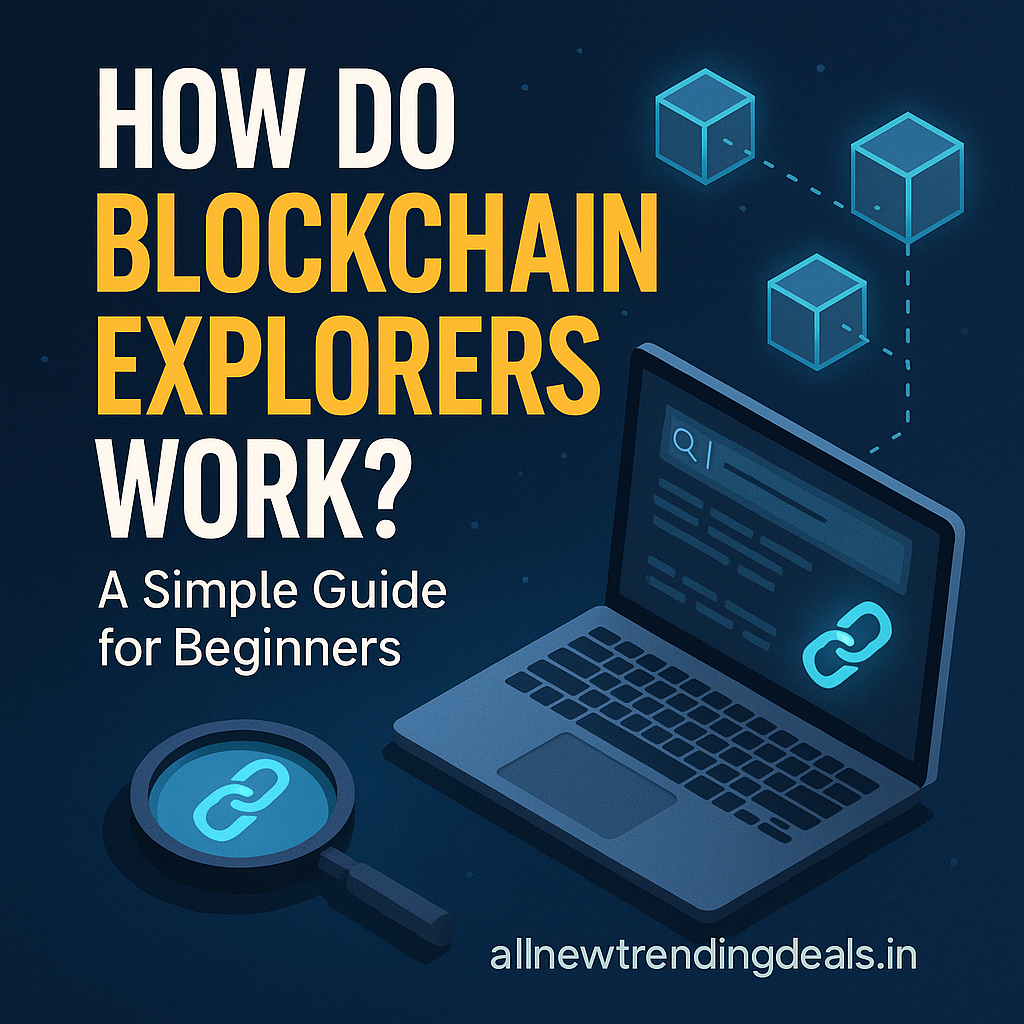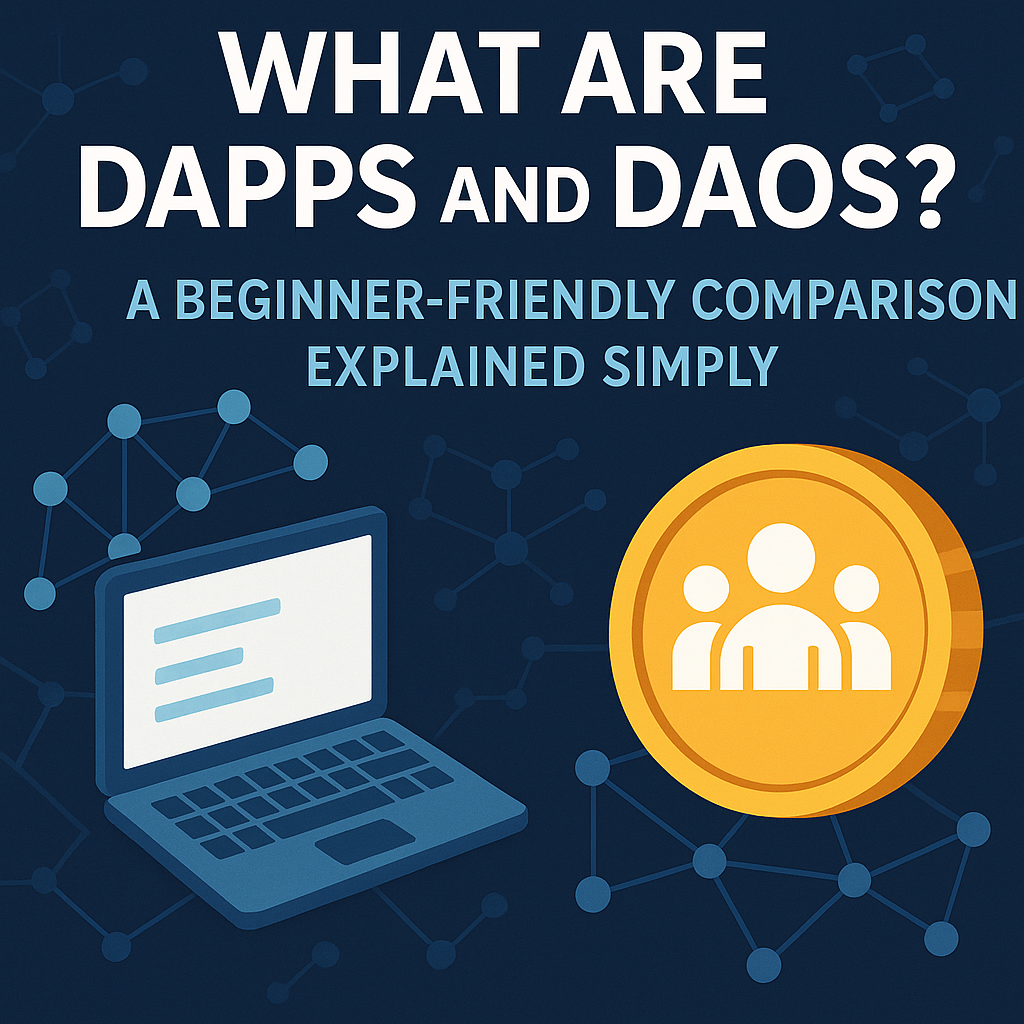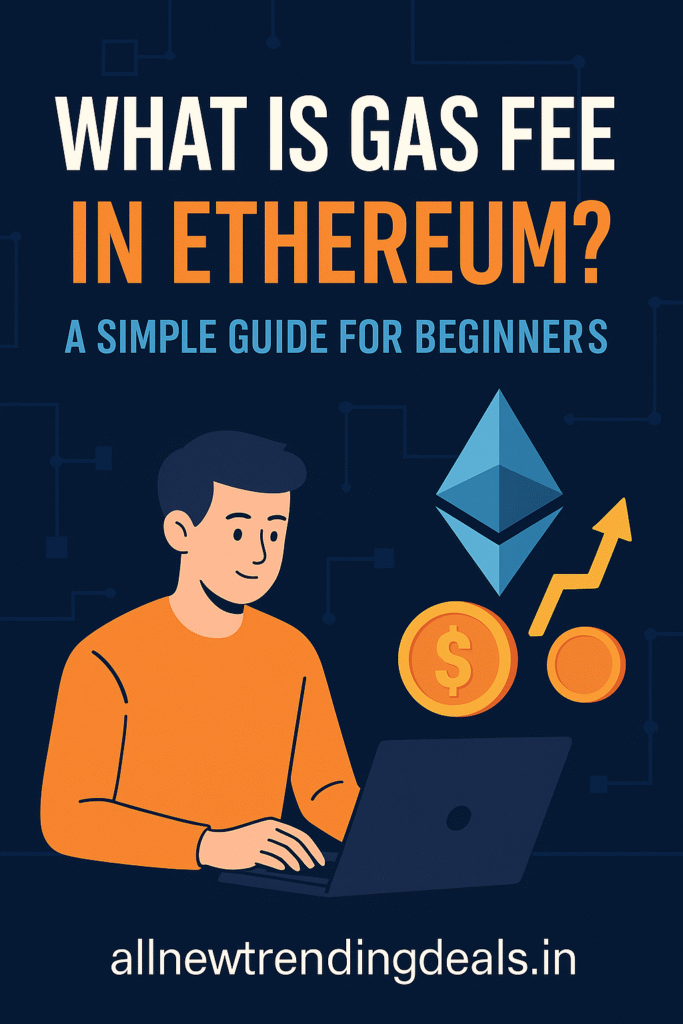Introduction

Have you ever sent or received cryptocurrency and wondered “Did my transaction go through?”
Or maybe you’ve seen someone mention “Etherscan this transaction” and felt lost?
Welcome to the world of blockchain explorers — the tools that make blockchain data readable and accessible for everyone.
In this beginner-friendly guide, we’ll explore:
- What a blockchain explorer is
- How it works
- Why it matters
- And how to use it confidently
🌐 What Is a Blockchain Explorer?
A blockchain explorer is like Google for blockchains. It allows you to search and view real-time information from a blockchain, such as:
- ✅ Transaction status
- ✅ Wallet balances
- ✅ Smart contract data
- ✅ Block history
- ✅ Token movements (NFTs, ERC-20s, etc.)
📌 Everything that happens on a public blockchain is visible through an explorer.
🔍 Quote: “A blockchain explorer is like your window into the most transparent database ever created.” — CryptoEducator
💡 What Can You Do With a Blockchain Explorer?
| 🔧 Use Case | 📊 Example |
|---|---|
| Track a transaction | Has your Ethereum transfer gone through? |
| View wallet balances | See what tokens or NFTs a wallet holds |
| Confirm smart contract activity | See if a mint or DeFi action was successful |
| Check gas fees | Review how much ETH was paid in gas |
| Explore new blocks | View recently mined blocks and validators |
| Detect scams | Spot suspicious tokens or fake transactions |
⚙️ How Blockchain Explorers Work (Simply Explained)
Blockchain explorers gather and display raw blockchain data in a user-friendly way.
🛠️ How it works:
- Connects to a blockchain node
- Indexes blockchain data (blocks, transactions, addresses)
- Displays it in search-friendly format
- Updates in real-time as new blocks are mined
They use a backend with tools like:
- Node software (Geth, Bitcoin Core, etc.)
- Databases (like PostgreSQL)
- Frontend UIs (React, Angular)
💡 Everything you see on Etherscan or Solscan comes from raw blockchain data, just made readable.
📈 Most Popular Blockchain Explorers
| 🚀 Blockchain | 🔍 Explorer | 🌐 Link |
|---|---|---|
| Ethereum | Etherscan | etherscan.io |
| Bitcoin | Blockchain Explorer | blockchain.com/explorer |
| Polygon | Polygonscan | polygonscan.com |
| BNB Chain | BscScan | bscscan.com |
| Solana | Solscan | solscan.io |
📦 Example: Track a Transaction on Etherscan
Let’s say you sent 0.05 ETH to a friend.
- Go to Etherscan.io
- Paste the transaction hash (TxID) in the search bar
- View:
- Status: Success / Pending / Failed
- From → To addresses
- Value sent
- Gas paid
- Block number
- Confirmation count
This level of transparency is unique to blockchain and empowers users to verify activity without needing a third party.
📊 Blockchain Explorer Comparison
| Feature | Etherscan | Solscan | BscScan | Blockchain.com |
|---|---|---|---|---|
| Token support | ✅ | ✅ | ✅ | ❌ |
| NFT tracking | ✅ | ✅ | ✅ | ❌ |
| Smart contract viewer | ✅ | ✅ | ✅ | ❌ |
| Real-time gas tracker | ✅ | ❌ | ✅ | ❌ |
| Open source | ❌ | ❌ | ❌ | ❌ |
🛡️ Real Use Cases for Explorers
For Beginners:
- Verify your transfers arrived
- Confirm gas paid for an NFT mint
- See if you interacted with the real contract
For Traders:
- Track whale wallets and token movements
- Analyze liquidity pool actions
- Monitor volume and DeFi protocols
For Developers:
- Debug transactions and test contracts
- Analyze mempool and gas usage
- Watch contract events or errors
❌ Common Misconceptions
| Myth | Truth |
|---|---|
| “You can see people’s names.” | No — only wallet addresses, not identities |
| “I can reverse a failed transaction.” | Impossible — once submitted, it’s permanent |
| “You need to log in to use an explorer.” | Not true — no login required |
| “Only devs use it.” | Anyone can use it — you just need to know how |
🧠 FAQs
Q1: Is it safe to use blockchain explorers?
Yes, explorers are read-only tools. You don’t input private info.
Q2: Can I track someone’s wallet?
Yes, but you won’t know who owns it unless their identity is public.
Q3: What if my transaction is stuck as “pending”?
It might be due to low gas. You can replace it with a higher gas fee.
Q4: Do explorers work for all chains?
No, each blockchain has its own explorer. Some explorers support multiple chains like blockchair.com
🧠 Our Thoughts
Learning to use a blockchain explorer is one of the most valuable skills in crypto.
You gain control, visibility, and confidence in your transactions.
We recommend every beginner:
- Track their own first ETH transaction
- Monitor a token or NFT project
- Watch how gas prices change in real time
It builds transparency, trust, and most importantly, knowledge.
🧠 “If you can read the chain, you’ll never be fooled.” — CryptoEducator
✅ Summary
- Blockchain explorers read and display on-chain data in real-time
- You can track transactions, view wallet balances, and monitor contracts
- They work for Ethereum, Solana, BNB Chain, Bitcoin, etc.
- Great for beginners, developers, and traders alike
- Free to use, no login required, and highly empowering

